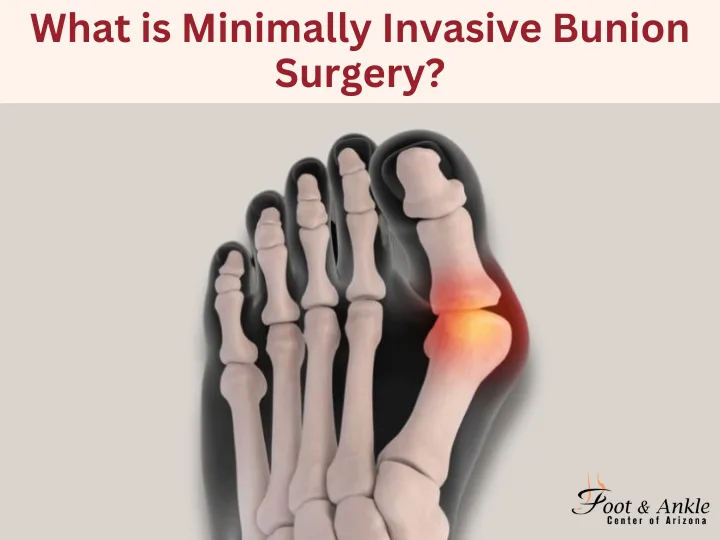Bunions—those bumping, throbbing bony lumps on the bottom of the big toe—can become painful with simple activities. If you are looking for surgery but do not like the old fashion, more invasive cutting procedures, then minimally invasive bunion surgery may be the right choice for you.
Know About Bunions
Before moving on to the surgical solution, it’s a good idea to understand why bunions form. A bunion, or hallux valgus, occurs when the bones in the front of your foot shift out of normal position. The big toe starts to push against the second toe, causing a bump on the joint. This can eventually cause pain, swelling, and trouble walking.
What is Minimally Invasive Bunion Surgery?
Minimally invasive bunion surgery is a surgical technique that corrects the bunion through very small incisions, usually less than a centimeter in size. As opposed to open surgery, which involves larger cuts and longer recovery, this new technique is designed to reduce tissue trauma.
During the procedure, the surgeon uses specialized instruments and imaging (like fluoroscopy) to perform precise bone cuts, reposition the toe, and fasten it with tiny screws or pins—without fully opening the joint.
Benefits of Minimally Invasive Bunion Surgery
This surgical technique is gaining popularity for good reason. Here are some key advantages:
- Smaller incisions – leading to minimal scarring
- Less pain and swelling post-operation
- Faster recovery time compared to traditional methods
- Lower risk of complications such as infection or stiffness
- Outpatient procedure – most patients go home the same day
Who is a Candidate?
Minimally invasive bunion surgery is not for everybody. Good candidates are patients with mild to moderate bunion deformity, good bone quality, and no excessive foot instability. A foot and ankle specialist can evaluate your condition based on X-rays and physical exam to determine the most appropriate course of action.
What to Expect After Surgery
Recovery is also quicker than with traditional bunion surgery. Most patients are able to walk in a surgical boot within a few days and are back to normal activities in 4 to 6 weeks. It can take several months for full healing, however. Follow-up visits and physical therapy provide optimal results.
Is It Right for You?
If bunions are affecting your quality of life and conservative treatments like orthotics or pain relievers haven’t helped, minimally invasive bunion surgery may be worth considering. Be sure to consult with a podiatrist or orthopedic foot surgeon experienced in the technique to see if you’re a good candidate.




